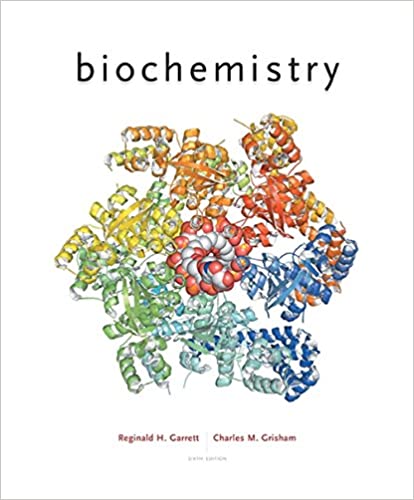
Biochemistry 6th Edition by Reginald Garrett,Charles Grisham
Edition 6ISBN: 978-1305577206
Biochemistry 6th Edition by Reginald Garrett,Charles Grisham
Edition 6ISBN: 978-1305577206 Exercise 2
The Properties of Informational Macromolecules
What structural features allow biological polymers to be informational macromolecules? Is it possible for polysaccharides to be informational macromolecules?
What structural features allow biological polymers to be informational macromolecules? Is it possible for polysaccharides to be informational macromolecules?
Explanation
Biological polymers have directionality and structural polarity. Polymers only form by certain connections, and these connections give biological polymers a certain order. The order and direction in which these polymers are arranged provides information to other parts of the cell.
All biological polymers can be informational macromolecules. Many polysaccharides are vital signaling molecules on the surface of cells.
Polysaccharides are often composed of repeating units of only one or two monomers. These repeating polysaccharides are not good informational molecules because single repeating units do not have any diversity.
The polysaccharides that are used as signaling molecules are often found on the cell surface. These polysaccharides do not contain repeating units and often contain many different monosaccharides. Branches increase the informational complexity of these surface polysaccharides.
All biological polymers can be informational macromolecules. Many polysaccharides are vital signaling molecules on the surface of cells.
Polysaccharides are often composed of repeating units of only one or two monomers. These repeating polysaccharides are not good informational molecules because single repeating units do not have any diversity.
The polysaccharides that are used as signaling molecules are often found on the cell surface. These polysaccharides do not contain repeating units and often contain many different monosaccharides. Branches increase the informational complexity of these surface polysaccharides.
Biochemistry 6th Edition by Reginald Garrett,Charles Grisham
Why don’t you like this exercise?
Other Minimum 8 character and maximum 255 character
Character 255


